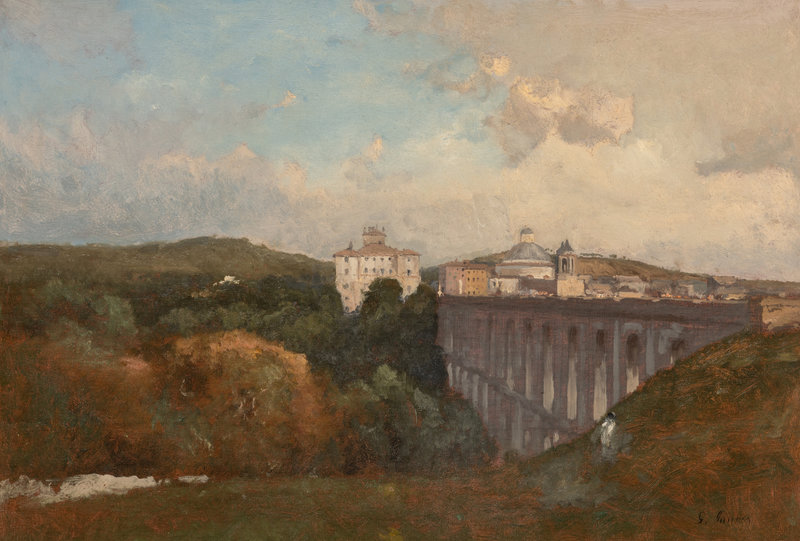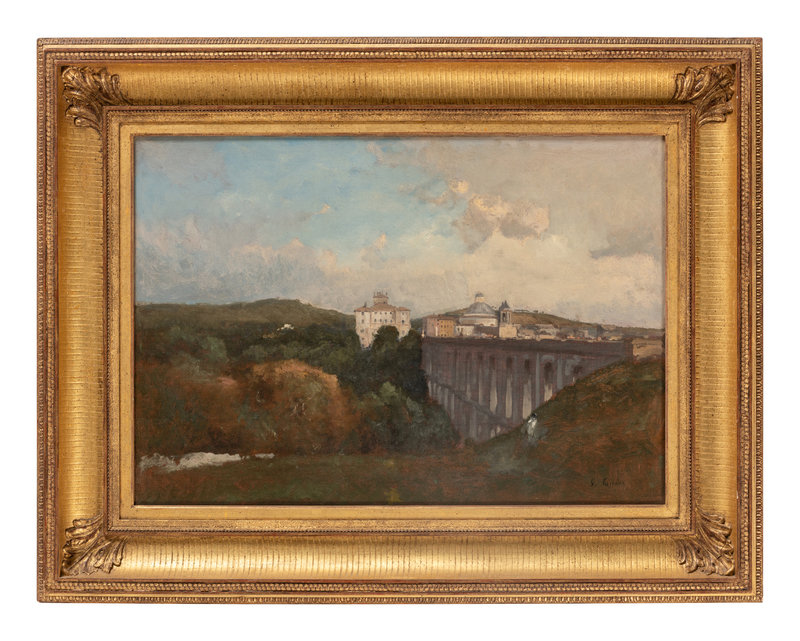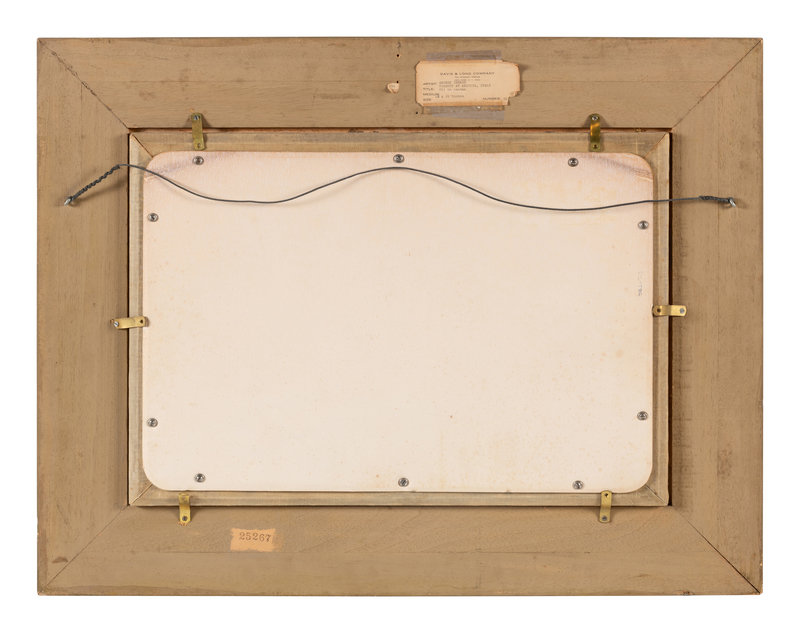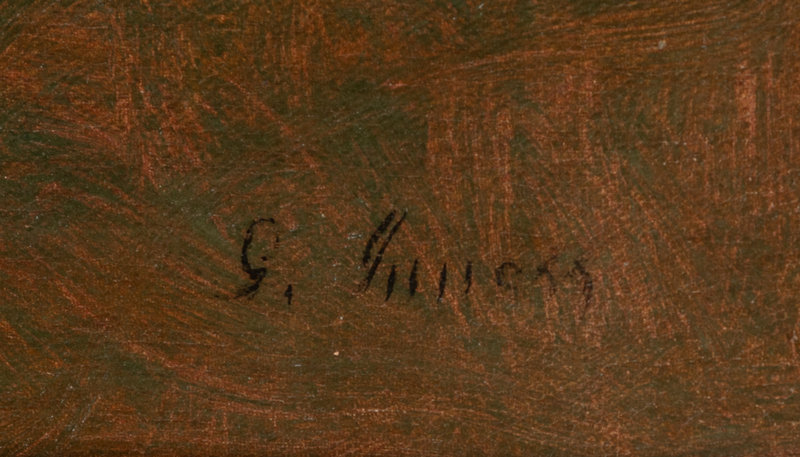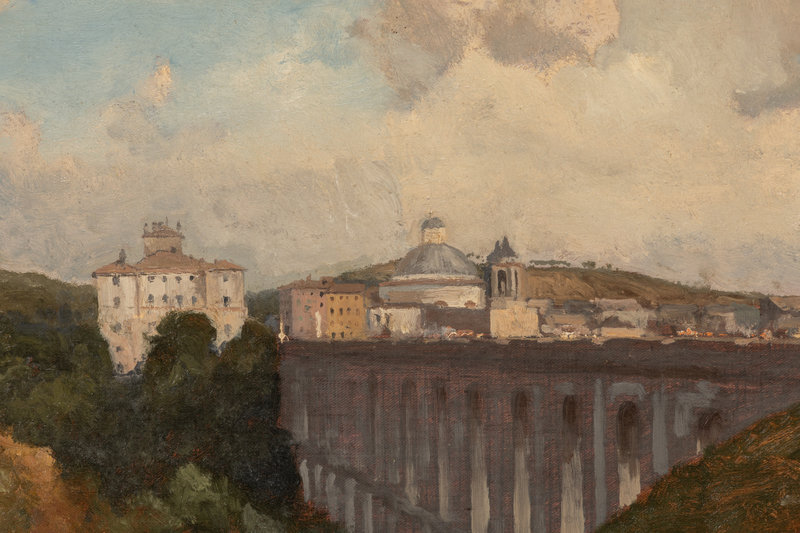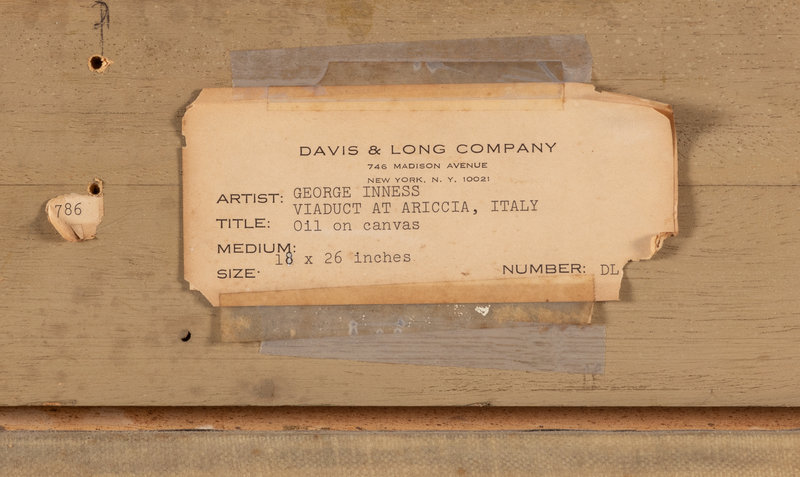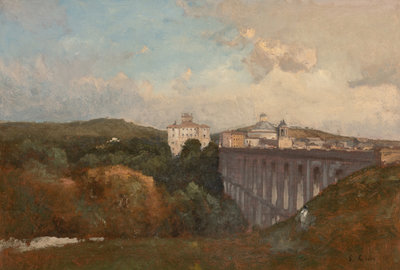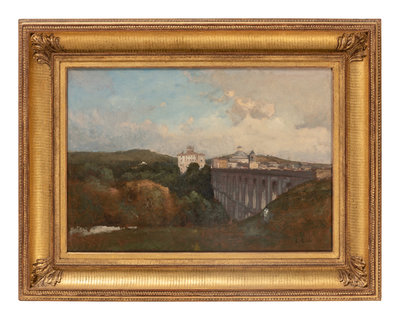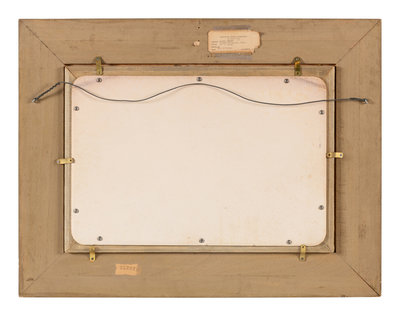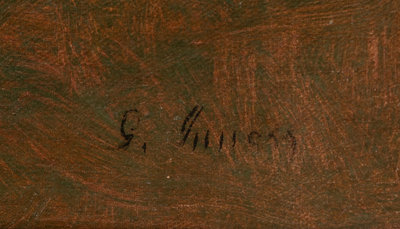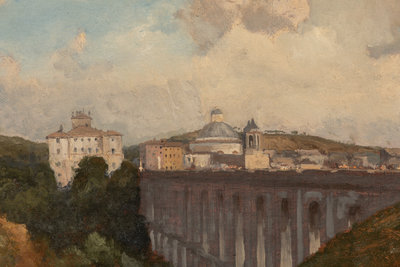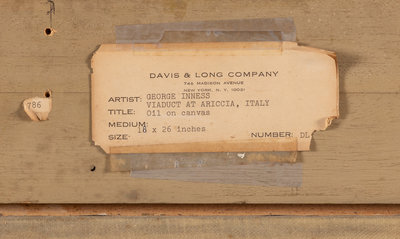Condition Report
Contact Information
Auction Specialists
Lot 50
George Inness
(American, 1825-1894)
Viaduct at Laricha, Italy, c. 1872-74
Sale 1283 - Canvas & Clay: The Collection of Judith and Philip Sieg, Bellefonte, Pennsylvania
Oct 26, 2023
10:00AM ET
Live / New York
Own a similar item?
Estimate
$50,000 -
70,000
Lot Description
George Inness
signed G. Inness (lower right)
18 x 26 inches.
The Collection of Philip and Judith Sieg, Bellefonte, Pennsylvania
(American, 1825-1894)
Viaduct at Laricha, Italy, c. 1872-74
oil on canvas
signed G. Inness (lower right)
18 x 26 inches.
The Collection of Philip and Judith Sieg, Bellefonte, Pennsylvania
